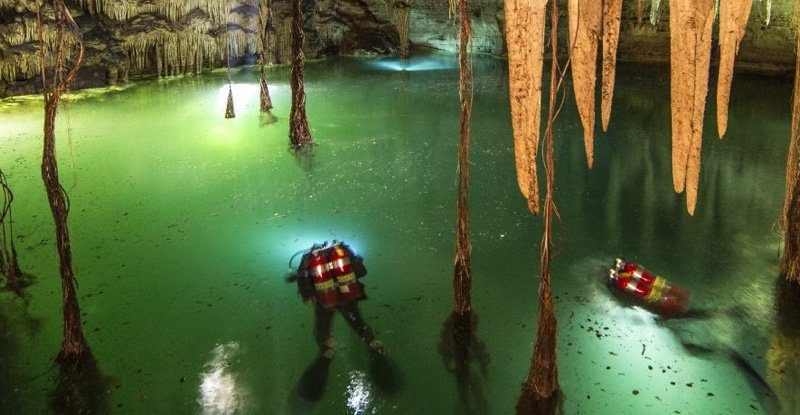The World’s Largest Underwater Cave Was Just Discovered And It’s Full Of Mayan Secrets
After extensive explorations that took place close to the Mexican city of Tulum in the Yucatan Peninsula, the scientists found incredible subterranean caverns, what seems to be the world’s largest flooded cave system of the greatest archaeological importance.
“This immense cave represents the most important submerged archaeological site in the world, it has more than a hundred archaeological contexts, among which are evidence of the first settlers of America, as well as extinct fauna and, of course, the Maya culture.”- says underwater archaeologist Guillermo de Anda from Mexico’s National Institute of Anthropology and History.
The team responsible for the discovery belongs to the Great Maya Aquifer Project or GAM, and they have been exploring the underwater caves in the Mexican state of Quintana Roo, located on the Caribbean coastline of the Yucatán Peninsula for decades.
What they found there are stunning 358 submerged cave systems, representing some 1,400 kilometres (870 miles) of flooded freshwater tunnels beneath the surface.
Among this stretched-out system, another leader rose a week ago. Named as the Sac Actun System, this tremendous entrance is so huge it was actually thought to be two distinctive cave systems.
It took 10 months comprehensive exploring before it became apparent that what seemed to be another cave system, named Dos Ojos System, spanning 93 kilometres (57.8 miles), was in fact, part of the Sac Actun System.
“We came really close a few times. On a couple of occasions, we were a metre from making a connection between the two large cave systems, it was like trying to follow the veins within a body. It was a labyrinth of paths that sometimes came together and sometimes separated. We had to be very careful.” GAM exploration director Robert Schmittner told Mexican newspaper El Pais.
Sac Actun offers an extraordinary possibility to the Great Maya Aquifer Project as well as the other comparative projects to encourage our understanding of the subsoil and all its biodiversity. On top of that, worthy of close investigation is the relationship that people had with those abundant natural resources.
As this video indicates, a large number of Maya antiquities and human remains are simply waiting in the darkness inside this incredible cave network to be discovered and analyzed.
“We’ve recorded more than 100 archaeological elements: the remains of extinct fauna, early humans, Maya archaeology, ceramics, and Maya graves. It’s a tunnel of time that transports you to a place 10,000 to 12,000 years ago.” De Anda told the Mexican media.
From the Mayan civilization to the Spanish conquistadors to the current day Mexicans, humans have cherished this beneficial location for many thousands of years.
Furthermore, it is quite possible this underwater caves to contain new sites of archaeological importance waiting to be discovered.
Source: sciencefacts.info
